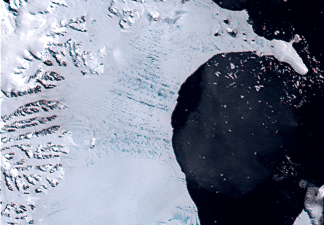focuses on using three-dimensional maps that use traditional geologic information in conjunction with contemporary computer mapping techniques. Figure 2.1 is an example of a three-dimensional map developed during this project. The addition of multiple layers does not mean that additional colors have to be used to represent the new layers. In fact, the effect is quite desirable as you now have an image that displays the depth and width of a specific geological zone.
Figure 2.1

Traditional mapping techniques have almost always attempted to incorporate the 'real world' in their maps using items like contour lines to represent elevational differences. Figure 2.2 illustrates this common technique.
Figure 2.2

Contemporary cartography continues to use traditional mapping techniques to create maps for visual use. Computers and mapping programs now allow cartographers to create maps that display the 'real world' in a different way. For example, Astronomers at the University of London have recently created a colossal three-dimensional map that is the largest of its kind. The map displays millions of galaxies spread over approximately five-million light years of space. The project is very interesting and deserves a look
http://www.ucl.ac.uk/news/news-articles/0605/06051802
Three-dimensional cartography goes way beyond making a better geological map or developing maps that explore the universe. Today's cartographers are building maps for areas of the 'real world' only imagined until now. The medical industry, nano-physics, and other areas of study have been given a new perspective on traditional concepts. Modern cartography's expansion to realms other then geop has opened doors so vast that there is now an overwhelming demand for computer savvy map geeks like us. Finally we get paid to do what we like the most, develop, analyze, and critize maps.



